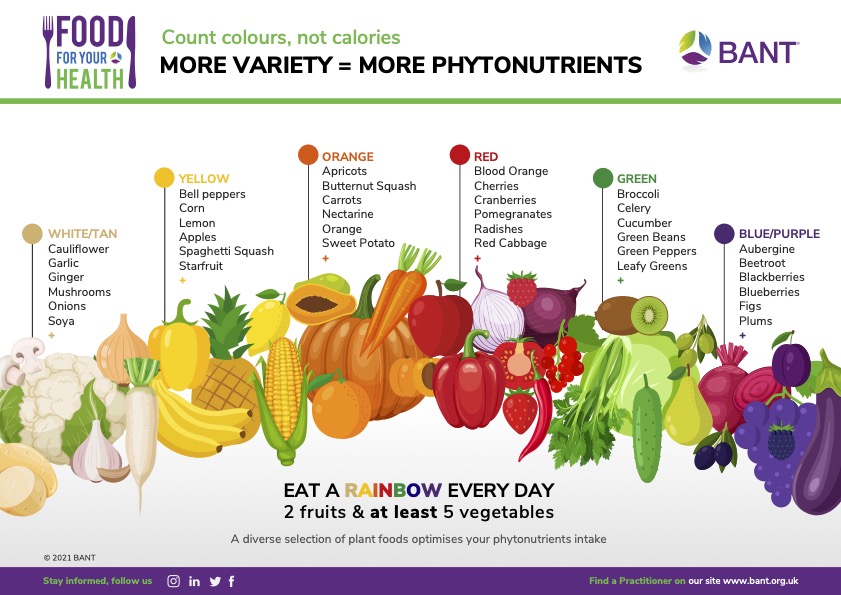
Why does eating the rainbow matter?
Research data over several decades suggests that fruit and vegetable intake is strongly associated with reducing chronic disease risk as well as having a beneficial impact on psychological well-being.
Eating a rainbow of colourful plant foods daily is an effective strategy for improving your diet and provides a range of vitamins, minerals, fibre and phytonutrients essential to supporting metabolic function the building blocks of health.
Colourful fruits and vegetables contain compounds called phytonutrients or phytochemicals. Plants produce phytonutrients or phytochemicals as an adaptive response to maintain an evolutionary advantage in reaction to their environments. They protect plants from germs, fungi, bugs, and other threats. These same protective benefits translate into human health when we consume diets rich in colourful plant foods. Phytonutrients can help reduce inflammation, protect against cellular damage, support detoxification processes, and generally help prevent disease and promote healthy aging and wellbeing.
Each colour carries different phytochemicals that give fruits and vegetables their vibrant colour and unique health benefits. The colourful pigment typically corresponds to a phytonutrient or phytonutrient category e.g. orange/beta-carotene, green/chlorophyll, and purple/flavonoids.
How much do we need?
There are no dietary reference values (DRVs) or upper limits for phytonutrients. The amount may vary based on individual health status.
A good starting point to aim for is two portions of fruit and at least 5 portions of vegetables a day, with 30 different plant foods a week. Wherever you start aim to gradually increase the amount and variety of plant foods you eat.
Tips for a more colourful diet
- Start by adding 1-2 new different coloured vegetable to your shopping basket each week that you can steam, roast or sauté to add to dishes.
- Frozen spinach, butternut squash or sweet potato can be useful to have in the freezer for adding to hot dishes such as soups, casseroles or curries. Frozen vegetables can be a quick and cost-effective way to add more colour and usually have just as many phytonutrients as their fresh counterparts if not more.
- Add grated or pureed vegetables into premade sauces, omelettes, frittata, slaws or soups.
If you are not sure where to start and/or would like support improving your diet please contact me to discuss how I can help.
Disclaimer: The above information is general dietary advice and does not provide personalised nutritional and lifestyle recommendations.
References
Blumfield, M. et al. (2022) Should We ‘Eat a Rainbow’? An Umbrella Review of the Health Effects of Colorful Bioactive Pigments in Fruits and Vegetables. Molecules. 2022 Jun 24;27(13):4061. doi: 10.3390/molecules27134061. PMID: 35807307; PMCID: PMC9268388.
Minich, D.M. (2019) A Review of the Science of Colorful, Plant-Based Food and Practical Strategies for “Eating the Rainbow”. J Nutr Metab. 2019 Jun 2;2019:2125070. doi: 10.1155/2019/2125070. Erratum in: J Nutr Metab. 2020 Nov 28;2020:5631762. PMID: 33414957; PMCID: PMC7770496.